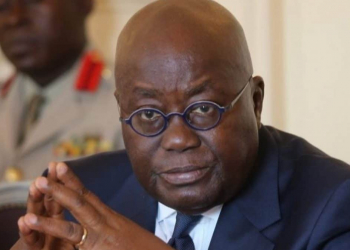Sugar cane farmers in and around Komenda have been handed a boost to expanding their farms following the Parliament of Ghana’s approval of a US$24,540,000.000 Indian loan facility to the Komenda Sugar Factory.
The loan facility which was sourced by the Government of Ghana from the Exim Bank of India is to be used to finance the development of an irrigation system, and to facilitate the cultivation of sugarcane to feed the Komenda Sugar Factory.
The company, therefore, is expected to use part of the money develop a sugarcane plantation and also extend support to the farmers, popularly known as out growers, to help produce sufficient sugarcane as raw material to feed the factory.
Overall, total land acreage of 2000 of the factory’s own land is expected to be cultivated to produce more than 100,000 tons of sugarcane per annum and thousands of additional acreage of out grower plantations assisted.
Irrigation schemes are also expected to be developed under the project to serve the nucleus farms of the Komenda Sugar Factory and adjoining communities.
According to a report of the Finance Committee of Parliament on the credit facility, out growers within the catchment area of the Komenda Sugar Factory will be assisted with improved seed variety and extension services to help increase production and to create jobs for rural youth.
Chairman of the Finance Committee, James Klutse Avedzi moving the motion for the adoption of the Committee’s report told the House that the loan facility was very necessary to ensure a secure and reliable source of raw material to feed the factory.
“Mr. Speaker, in the absence of this arrangement, the factory will be compelled to rely on local sugarcane producers for raw material. However, the local production currently available can supply about 30% of the factory’s raw material requirements. During the gestation period of the second component which is expected to last for two years, the factory will rely on supplies from about 100km radius covering parts of Western Region, Eastern Region, Volta Region, Greater Accra Region and the Central Region for its raw material needs,” he noted.
But the Member of Parliament (MP) for Effutu, Alexander Afenyo-Markins, commenting on the loan facility although commended the government for such initiative, he was quick to add that the timing was wrong.
“Mr. Speaker, no reasonable person will build the facility without having the raw material to feed it. A reasonable person will not allow the company to sit down idle before looking for raw materials. Such decision must be taken early enough to enable the country get value for money,” he said.
Ghana currently imports substantial quantities of sugar for both domestic consumption and industrial use.
In 2013, sugar remained the eight most valuable imported commodity and the fourth largest food import after rice, fish and poultry.
Sugar consumption is growing rapidly and in recent years, Ghana has spent more than US$200million per annum on importing about 200,000 metric tons of sugar.
It is further estimated that sugar consumption could rise to more than 800,000 metric tons by 2023 and within the broader ECOWAS sub-region; sugar is also a large net import.
Government officials say with several other imports, Ghana’s economy cannot afford this huge drain on its scarce foreign exchange reserves, hence the loan facility to revamp its local production to cut down on sugarcane imports.
Join GhanaStar.com to receive daily email alerts of breaking news in Ghana. GhanaStar.com is your source for all Ghana News. Get the latest Ghana news, breaking news, sports, politics, entertainment and more about Ghana, Africa and beyond.


